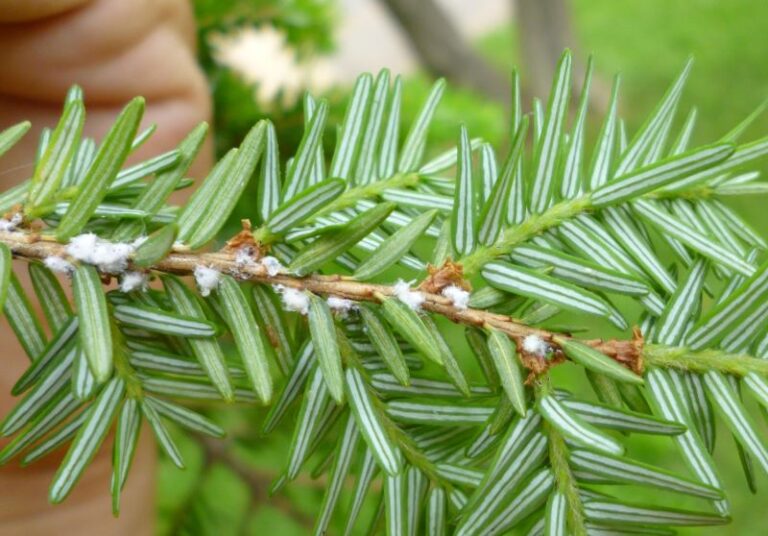Adelgids (Adelgidae)
GDD Window (base 50): 22-618, depending on species
Overview:
- Small, aphid-like insects associated with conifers
- 1.5mm in length, varying in color by species, from dark reddish-brown to purplish-black.
- May or may not have wings.
- No cornicles.
- Nymphs resemble small adults.
- Adults produce a protective wool-like filament.
- Cause white, cottony masses at the base of needles.
- Can lead to off-color, grayish needles, thinning crowns, premature needle loss, and dieback and death of trees.
- Can cause gouting, or abnormal swelling of branch nodes and buds.
- Host plants: Conifers – Douglas-fir, hemlock, larch, pine, spruce
Management:
Cultural Practices:
- Beneficial insects: ladybugbeetles, lacewings, parasitic wasps(Pseudoscymnus tsugae)
- Companion plantings: marigolds,nasturtiums, dill, basil
- Traps: Sticky traps, monitoringtraps
- Mulch to suppress weeds and retainmoisture
- Reduce plant stress
- Avoid over-fertilizing
- Heavy sprays of water
Materials:
- Contact insecticides:
- Pyrethroids [3]: permethrin, bifenthrin, cypermethrin, deltamethrin
- Carbamates [1A]: Carbaryl
- Systemic insecticides:
- Organophosphates [1B]: malathion, diazinon, acephate
- Neonicotinoids [4A]: Imidacloprid, Dinotefuran
- Diamides [28]: Cyantraniliprole
- Considerations:
- Will harm non-target species and beneficial insects
Biorationals:
- Insecticidal soaps
- Horticultural oils
- mineral oil, neem oil




Disclaimer – Materials do not cover all possible control scenarios and are intended for licensed professionals. Tradenames do not imply endorsement and are used as examples. You must strictly follow the label for each compound prior to use. Rutgers is not responsible form is used materials or damages thereof. The label is the law. Labels will provide detailed information on use and restrictions. Additionally, application intervals, compatibility, surfactant use, PHI, PPE, important and other key information is described in detail. Always discuss treatments with your local agents. Note: Neonicotinoids can only be legally applied in commercial agriculture settings by licensed applicators. Guidelines and recommendations made in this presentation are specific to the state of New Jersey.
